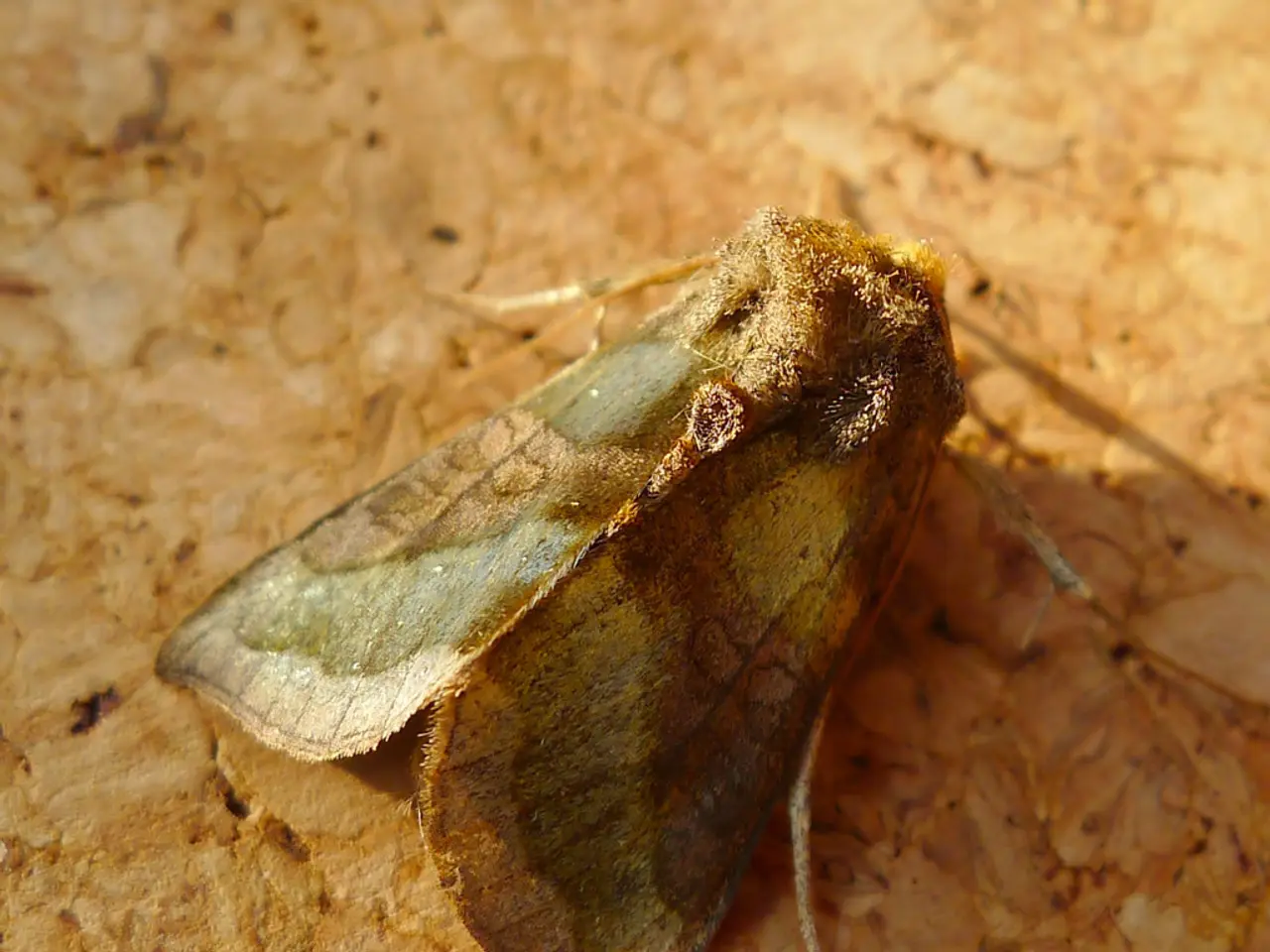MothNet's Initial Overview
In the heart of New Zealand, a unique initiative called Ahi Pepe MothNet is making waves in the world of moth research and conservation. This project, which began as an endeavour to gather data on the distribution and ecology of moths in the Otago region, has since expanded to involve communities across Aotearoa.
Led by Dr Barbara Anderson and Dr Robert Hoare, both passionate entomologists, Ahi Pepe MothNet is a participatory science project that encourages the public to monitor moth populations and contribute to valuable scientific data collection. The project collaborates with various organisations, including Forest & Bird, Manaaki Whenua - Landcare Research, Plant & Food Research, and the New Zealand Association of Science Educators, to facilitate this work.
One of the key contributions of Ahi Pepe MothNet is its generation of data on moth species distribution and abundance. By engaging the public in monitoring efforts, the project raises awareness of moth biodiversity and supports conservation strategies tailored to protect these ecologically important insects within New Zealand's unique ecosystems.
To make it easier for beginners to participate, Ahi Pepe MothNet has developed identification guides for all of New Zealand. In addition, eight guides have been produced in te reo Māori and English, reflecting the project's commitment to inclusivity and cultural diversity. For more information, visit www.ahipepe.org.
Ahi Pepe MothNet's work is not confined to academic pursuits. Schools have been actively involved in investigating the effects of factors such as vegetation restoration, orange street lights, and environmental change on moth diversity. Four of the six tamariki even presented their MothNet project at the World Indigenous Peoples Conference on Education (WIPCE).
Moreover, Ahi Pepe MothNet demonstrates how the strands of the nature of science are interrelated. It showcases the importance of collaboration, data collection, and community engagement in scientific research. The project also incorporates mātauranga Māori (traditional knowledge) and weaves science, Kāi Tahu stories about moths, and te reo Māori together.
Moths play a crucial role in the ecosystem. They are food for native birds, reptiles, and invertebrates, and they are pollinators of plants. Furthermore, due to their short lifespans and mobility, moths are excellent indicator species for environmental change.
The Ahi Pepe MothNet project has received funding from several sources, including Otago Science into Action, the Otago pilot of the Participatory Science Platform, Manaaki Whenua - Landcare Research, Te Kura Kaupapa Māori o Ōtepoti, Te Rūnanga o Ngāi Tahu, Te Tumu, University of Otago, Department of Geography, University of Otago, Orokonui Ecosanctuary, Otago Museum, and New Zealand's Biological Heritage National Science Challenge.
In July 2017, students at Te Kura Kaupapa Māori o Ōtepoti took their moth research to the 2017 World Indigenous Peoples Conference on Education in Canada. Renewed funding has since expanded the Ahi Pepe MothNet project to include all of Aotearoa, allowing schools across the country to take part in moth research.
For an overview of the project, watch the video "Moth Net: Shedding Light on the Night." Together, we can continue to learn more about these fascinating creatures and contribute to their conservation.
Science and environmental-science are integral components of Ahi Pepe MothNet, a participatory project that invites the public to monitor moth populations. This education-and-self-development initiative, backed by various organizations, is not only focused on research and conservation, but also emphasizes the importance of lifestyle choices, such as vegetation restoration and minimizing environmental impact, to preserve moth species in New Zealand's distinctive ecosystems.




